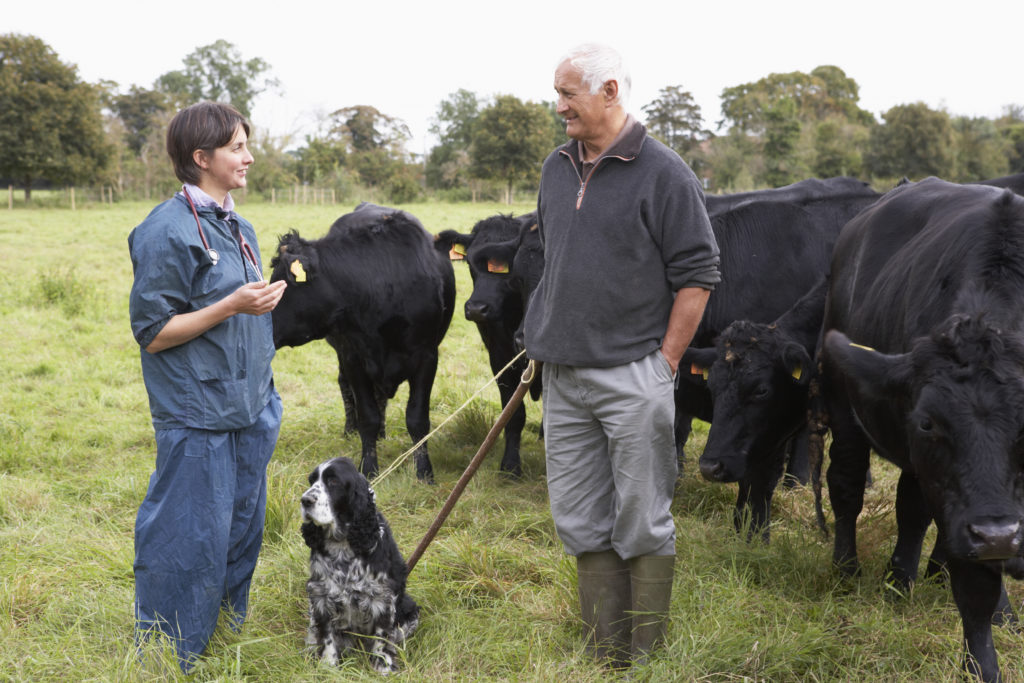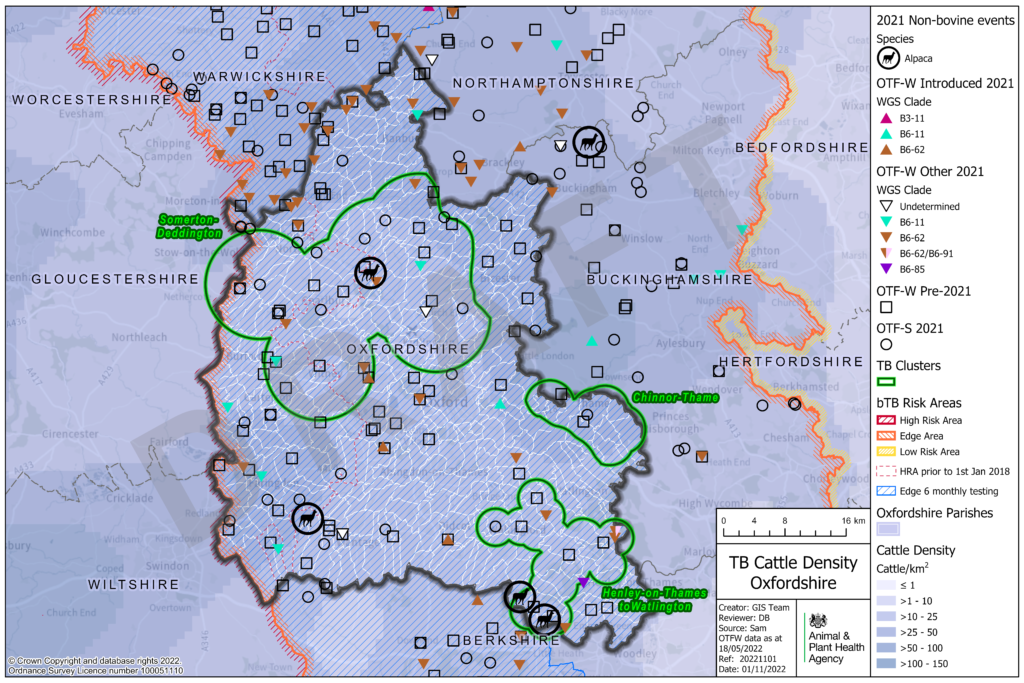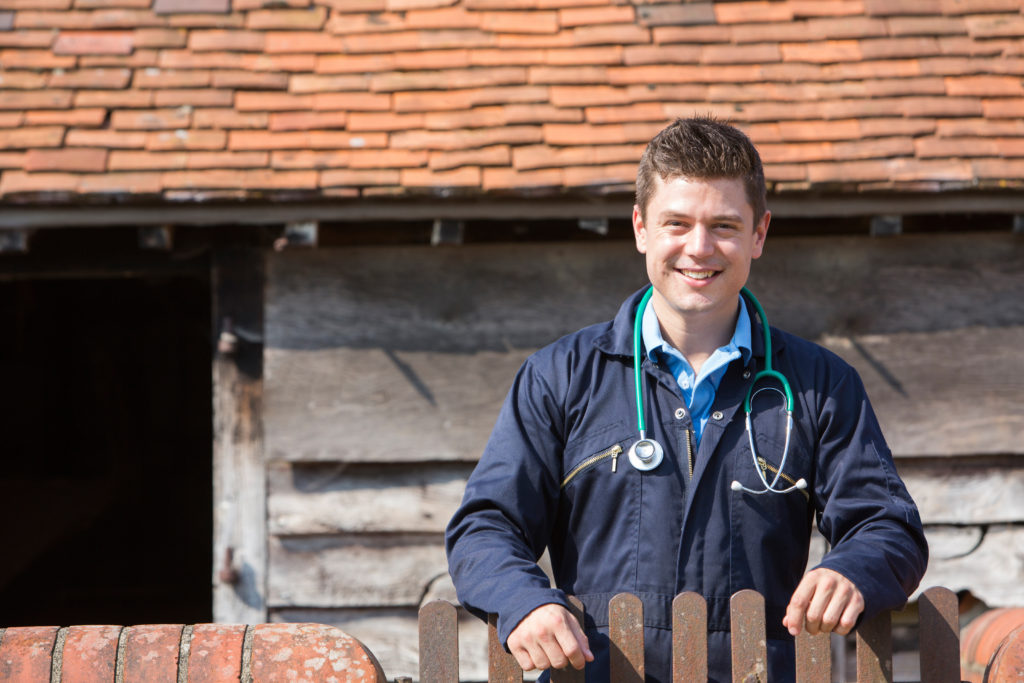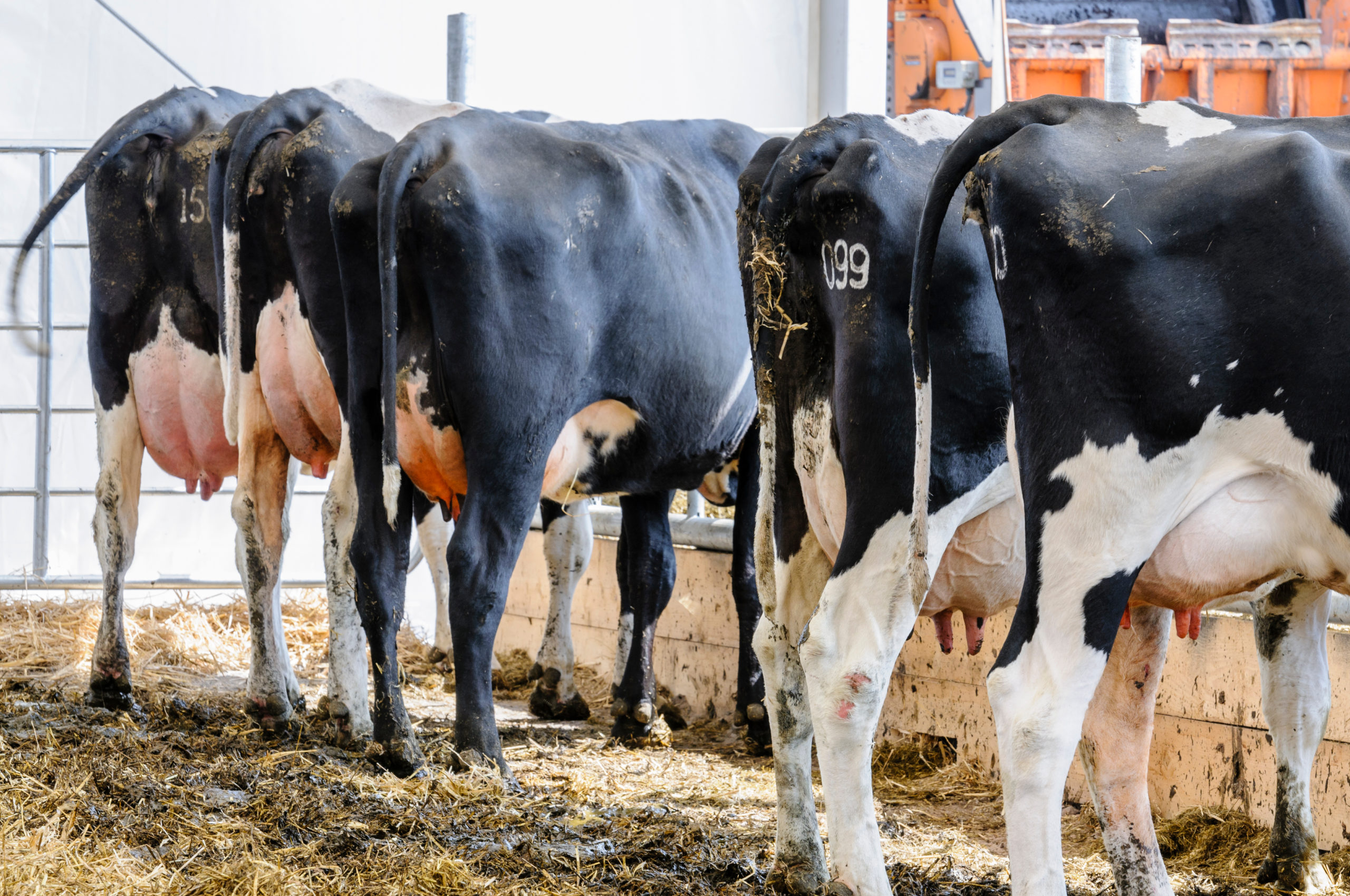The government is committed to implementing its 25-year strategy to eradicate bovine TB (bTB) in England. As part of the strategy, a new pilot scheme was launched in Oxfordshire in October 2022. The pilot was initially intended to operate for one year in two bTB cluster areas in Oxfordshire which were identified by the Animal & Plant Health Agency (APHA) but continues to operate.
Aims of the pilot
The Oxfordshire cluster pilot does not replace existing statutory bTB surveillance and control measures, which farmers must still adhere to.
The additional measures aim to complement existing bTB controls and other local initiatives and activities, such as the Berks, Bucks and Oxon TB Eradication Group and the work of the National Farmers’ Union (NFU) with its members.
In the long term, if stakeholder interest and engagement with the pilot remains high, Defra will consider extending it beyond the initial one-year period. This would allow the pilot to gather more information about whether a similar approach could be applied to different bTB cluster areas across England. The pilot is funded and facilitated by Defra, but decisions on the activities to control bTB are taken locally by the bTB cluster steering groups.

Epidemiology of the Oxfordshire bTB cluster areas
For the purposes of bTB control, England is divided into three different management regions (High Risk Area, Low Risk Area and Edge Area) which can be viewed on the bTB risk map. The level of bTB varies between regions and that is why different control measures are applied in different parts of the country. Oxfordshire is situated in the Edge Area of England, which was established in 2013. Since then, cattle herds in the Edge Area are subject to enhanced bTB control measures to halt the spread of disease from the High Risk Area (HRA) and protect cattle herds in the Low Risk Area (LRA). In 2018, further changes to disease control measures in the Edge Area were introduced, along with redefining the boundaries.

Cattle herds in Oxfordshire routinely undergo six-monthly TB surveillance testing, which was introduced in 2021/22. However, a proportion of lower-risk cattle herds in the county (25% in 2021) are eligible for less frequent (annual) surveillance testing under the earned recognition scheme. In 2021, Oxfordshire had the highest TB incidence rate in the Edge Area and the fifth highest in England (only four HRA counties had a higher incidence rate than Oxfordshire). However, despite this, in 2021 the incidence rate decreased for the second year running. This may be explained by earlier detection of TB incidents (breakdowns) due to increased frequency of surveillance testing since 2018 and use of supplementary interferon-gamma blood testing in TB incident herds.
In 2021, more than half of the TB incidents in Oxfordshire occurred in herds with a history of TB in the previous three years (recurrent TB incidents). The key drivers of the bTB epidemic in Oxfordshire during 2021 were:
- Exposure to infected local badgers
- Purchase of undetected infected cattle
- Residual infection in cattle herds from previous TB incidents
You can find more information about the epidemiology of bTB in Oxfordshire in 2021 (and other Edge Area counties) in APHA’s annual bTB epidemiology reports.
Oxfordshire bTB clusters
APHA has identified several clusters of bTB infection in Oxfordshire. Clusters are defined as a group of TB incidents in cattle which:
- Occur in the same defined geographical area
- Occur within a specific time frame
- Are caused by closely genetically related strains of Mycobacterium bovis (M. bovis), the bacterium that causes TB in cattle
Genotyping and whole genome sequencing (WGS) analysis of M. bovis isolates has demonstrated a close degree of genetic relatedness between TB incidents within these clusters. This can be explained by direct and indirect contact between cattle and infected wildlife in the absence of local cattle movements and contiguous contact between herds. In most TB incidents, a wildlife source refers to transmission from local badgers, but other wildlife such as deer may have also been involved.
The map below shows the geographic distribution of new TB incidents detected in 2021 in cattle and other domestic animals in Oxfordshire and in the neighbouring counties of the Edge Area, along with the associated WGS clade of M. bovis.

North West Oxfordshire cluster
The North West Oxfordshire bTB cluster is in the north of the county. Historically, the most common M. bovis genotype (strain) found in cattle TB incidents in this area was the local genotype to Oxfordshire, East Gloucestershire and Warwickshire, known as 10:a. This genotype mutated in recent years in this locality to a different spoligotype, 130. Both 10:a and 130 are in the same WGS clade, B6-62. For an explanation of how M. bovis isolates are genetically typed and the difference between genotypes, spoligotypes and WGS clades, visit our page on whole genome sequencing.
WGS analysis of these M. bovis isolates found 13 genetically related TB incidents, varying between zero and two single nucleotide polymorphisms (SNPs) apart in the same geographical area. If other M. bovis isolates with a few more SNP differences are also considered, this North West Oxfordshiren cluster of TB incidents appears to be part of a larger bTB cluster extending from the western county border with Gloucestershire to the eastern border with Buckinghamshire.
Thame-Chinnor cluster
This bTB cluster is in the east of the county bordering Buckinghamshire. In 2017 a new M. bovis genotype NT:7-5-5-4*-3-3.1 (considered a mutation of genotype 10:a, and all part of WGS clade B6-62), was first identified in three cattle TB incidents close to each other. This genotype was later found to be closely related to genotype 17:g found in four more TB incidents in the area (all within 6km of each other), and some cattle herds have had recurrent incidents with the same genotype. WGS analysis indicated very close genetic relatedness between isolates, and with the absence of other epidemiological links, infected badgers were considered the most likely common source of TB infection. Radial testing was triggered by these cattle TB incidents in the Chinnor-Thame cluster to investigate lateral spread into the neighbouring county of Buckinghamshire, but so far no evidence of this has been found.
Steering Groups
Steering groups have been established for each of the two bTB clusters involved in the Oxfordshire cluster pilot. These steering groups include people with expertise and local knowledge on bTB, including local farmers, representatives from private veterinary practices (vets and approved tuberculin testers), the NFU, APHA veterinary advisors, and market operators. The groups are supported and facilitated by Defra’s bTB Programme and APHA vets. The bTB cluster steering groups make decisions about how the pilot operates and how the allocated funding is spent. APHA provides veterinary and epidemiological expertise to the steering group and Defra assists with promotional activities and engaging local stakeholders. Crucial to the project’s success are the ideas put forward by the steering groups. These ideas form the basis of bespoke, local approaches to controlling bTB in the cluster pilot areas.

If you would like to get involved with one of the steering groups, email [email protected]
Activities
Each bTB cluster steering group discusses and agrees a range of bTB control activities. A selection of ideas discussed at initial open meetings included:
A series of talks on various bTB topics delivered by experts in their field, to provide information to local farmers and vets.
Guided visits to local farms that have successfully implemented effective bTB biosecurity measures.
TB Advisory Service advisors are available nationally to consult with farmers about the steps they can take to prevent TB incidents and minimise the impact when they occur.
The government is moving away from badger culling towards vaccination and aims to upskill local communities to vaccinate badgers.
Local farmers and vets are keen to understand what role (if any) wild deer play in spreading bTB in the area. The pilot plans to work with local deer stalkers to improve the reporting of suspect cases of TB in wild deer in the local area.
Markets are important social spaces and sources of information for farmers. The pilot aims to work with local markets to help them better support their customers to consider bTB risk when trading cattle.
